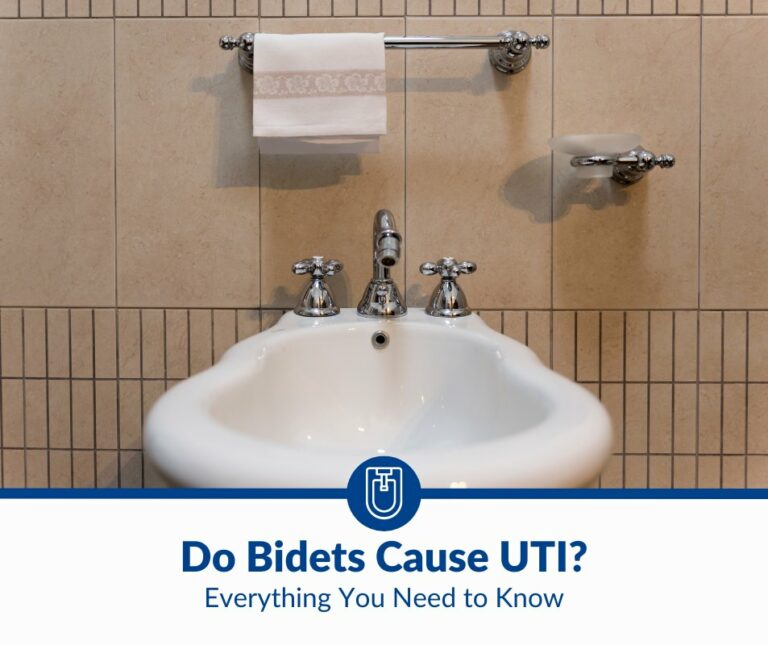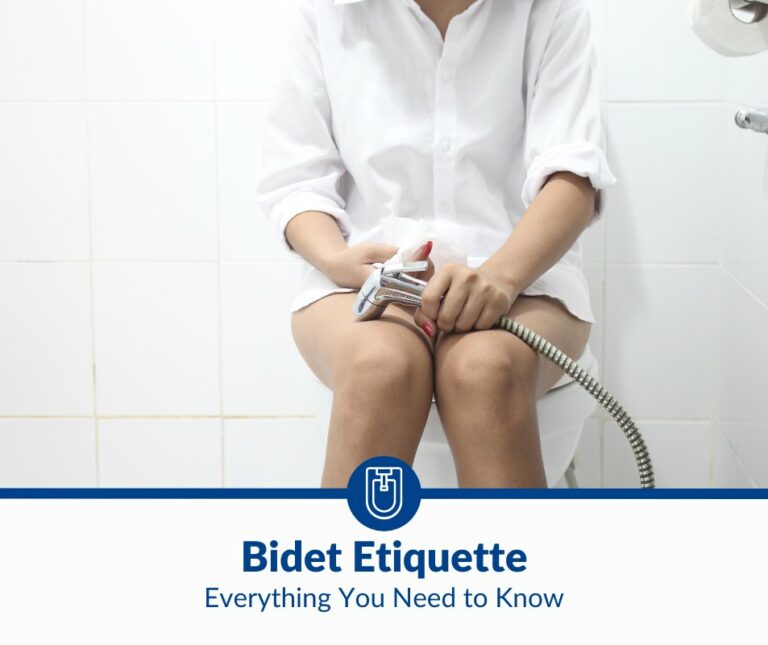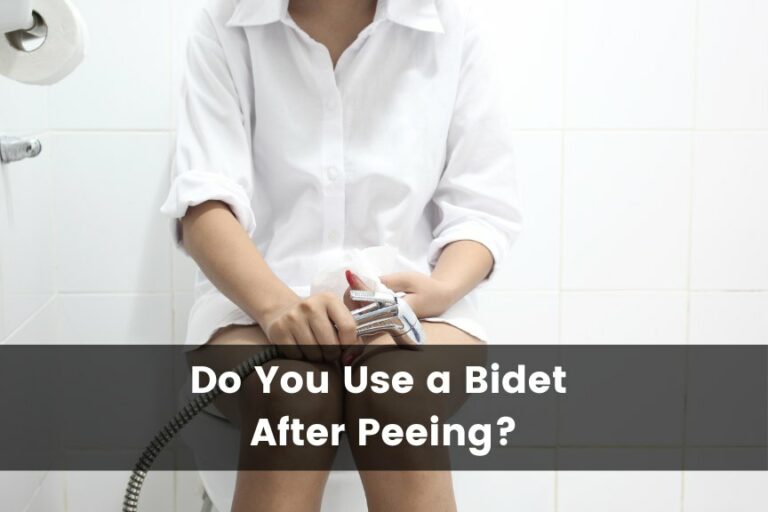Can Bidets Cause Hemorrhoids?
If you love using your bidet every day after using the toilet because it leaves you feeling so much cleaner than when you use toilet paper, you might wonder if bidets are completely safe and healthy for you. Many people wonder if bidets cause hemorrhoids.
Worried that using a bidet can cause hemorrhoids? The research indicates that bidets can actually provide relief for hemorrhoid sufferers. In fact, bidets are often recommended by medical professionals for individuals with hemorrhoids due to their ability to gently cleanse and soothe the affected area. Instead of causing hemorrhoids, bidets may help alleviate the symptoms associated with them.
In this article, I’ll feature research into this issue, looking at how bidets could contribute to a higher incidence of hemorrhoids. I’ll also explore research that has found they’re healthy before diving into how you should use bidets to keep your anal region free of health issues.
Regular Bidet Use and Hemorrhoids: What Research Says
To date, there have been conflicting findings about regular bidet use and hemorrhoids. Theoretically, using strong water pressure on one’s anal skin can cause the anorectal area to become dry or rough, which can potentially put it at a higher risk of infection, as ACG Case Reports Journal reports.
However, the publication says that much of the data in previous studies have been based on surveys. The scientific literature on this subject is lacking, and sometimes the bidet-toilet is studied, which varies quite a bit from classical bidets that don’t include any high-pressure water jets. There’s clearly a need for more research to be conducted on the regular use of bidets.
Research That Hemorrhoids Can Be Alleviated With Bidets
Are bidets good for hemorrhoids? There is evidence that using a bidet can help to alleviate and even prevent hemorrhoids. As gastroenterologist Partha Nandi tells Vice, “[A bidet] can be useful with patients who suffer from hemorrhoids since toilet paper can be quite irritating. Hemorrhoids can be further aggravated due to the friction of toilet paper, so bidets offer a less harsh alternative.”
Research backs this up. When studying the effects of using a bidet on the anal region and if it could cause health problems such as hemorrhoids and urogenital infections, researchers monitored study participants for a year. They found their conditions were not related to regular bidet use, as Preventative Medicine Reports has published.
Since experiencing regular constipation can result in hemorrhoids, you should encourage softer stools that are easier to move through the colon. An effective way in which you can do this is to use your bidet with warm water before you have a bowel movement. Doing this has been found to increase the flow of water to the anal region so that it can soften the anal tissues while easing defecation.
It works a bit like a massage on the delicate anal tissue, as the Journal of Medical Sciences reports. However, if you’re using a bidet before and after a bowel movement, you run the risk of washing yourself too much, which can result in skin irritation. This can be exacerbated by wiping aggressively with toilet paper. Therefore, care is needed.
Other Health Conditions Associated With Bidets
There are mixed messages about using high-pressure water in your bidet, as some people think it encourages defecation, but others say that this can cause a contraction of the anal sphincter. Usually, this muscle contracts so that gas and fluid don’t leak out of the anus.
When this happens, it can cause what’s known as dyssynergic defecation, which is a condition in which pelvic floor muscles can’t coordinate with the surrounding nerves and muscles to produce a normal bowel movement, as the University of Ohio Hospitals & Clinics reports.
It’s good to bear in mind that some symptoms that are common with hemorrhoids are also present with other health conditions, with itchiness being a prime example. Therefore, if you experience anal itchiness, this might not be hemorrhoids but other conditions.
A study that was reported in the Journal of the Anus, Rectum, and Colon found that people who used bidets excessively experienced perianal dermatitis, which is an inflammation of the perianal skin, and there were also people who experienced anal pruritus or itching.
However, the research stated that some bidet habits correlated with these issues, such as washing before defecation and using the bidet too much, which can cause it to dry out the delicate skin of the anal region. When skin gets too dry, it can crack and cause tears, which puts it at greater risk of infections.
How To Safely Use Bidets
If you love using your bidet, you can increase your hygiene and maintain a healthy anal region by following some important tips. These include the following, which will enable you to continue enjoying your bidet.
Use Warm Water in Your Bidet
Emphasis is usually made on ensuring that using warm water is the best, healthiest option to use in your bidet. But why? A study reported in the Journal of Korean Medical Science states that a bidet can decrease anal pressure in a similar way to a traditional warm sitz bath as long as warm water is used and low or medium water pressure is administered.
The additional benefit of using warm water from a bidet is that it encourages blood circulation in the skin around the anus, as Healthline reports. However, not all bidets have a warm-water setting.
Choose a Low Pressure
You should always choose a low-pressure stream of water when using your bidet, as a high-pressure flow can cause reflex contractions of the anal sphincters and could cause damage to the anal sphincter and mucosa in the long run, so it’s best avoided.
If you’re suffering from a health condition such as an ulcer around your anus or genitals, it’s even more important to ensure you use low water pressure. Otherwise, as Health reports, you will aggravate the tears and wounds that are already present in the skin.
Be Careful With the Spread of Bacteria
Although bidets can be safe and even healthy for you, some studies have found that using them too regularly can become problematic, especially regarding women’s health.
Research that the European Journal of Public Health conducted between the years 2007 to 2014 in countries such as Japan, India, and Korea, found that approximately 43% of women who used bidets had changes to their vaginal microflora. They also experienced a higher risk of bacterial vaginosis and hemorrhoids.
In addition, in the study we mentioned earlier that was published in Preventive Medicine Reports journal, the researchers stated that more research is required to see if bidet use can cause health conditions such as bacterial vaginosis. This is a condition in which bacteria that are naturally found in the vagina become overgrown. Bidets can cause bacteria to spread to the vagina because of its close proximity to the anal opening.
Don’t Hover Over the Bidet
With some bidet designs, you have to straddle the bidet so that you can direct the flow of water from the bidet’s jets to where you want it to go. To do this properly, you might have to hover over the bidet, especially if the bidet has a classic design that causes you to feel uncomfortable sitting on its rim.
Although you might want to hover over a bidet, especially if you’re using one in public and don’t know who else has used it or when last it was cleaned, hovering is what could be causing you to put pressure on the veins around your anus, not the use of the bidet in itself. So, this is something to be aware of when using bidets regularly.
It’s easy to see how hovering over a bidet could be bad for you if you consider how hovering over, or sitting on, a toilet for prolonged periods of time can put pressure on those veins. It’s basically the same thing as squatting over the bidet, and both are unhealthy for the veins.
When you hover over the toilet, your hips hold you midair, and this can prevent you from letting all of your urine flow out of your bladder. This can cause problems for men and women, but it’s been found to be harmful to women specifically.
A study found that women who hover might follow unhealthy habits to empty their bladders thoroughly, such as by straining, and this can cause damage, as The Ohio State University Wexner Medical Center. Based on this, hovering or squatting over your bidet regularly can result in damage.
Don’t Wash Your Anal Region Too Much
It’s easy to assume that since you’re not using toilet paper to clean your anus after a bowel movement, you can wash it with a lot of water. This is something to be careful to avoid. Using too much water from your bidet can increase irritation instead of reducing it.
And remember, you should never use any soap to clean yourself. Water is enough. Soap can cause further irritation to your skin by drying it out. This, in turn, can cause damage to the skin that’s linked to hemorrhoids.
You can prevent overwashing your anal region with the use of an electric bidet because you can direct the stream to where you want it to go. However, if you’re not using a hand-held sprayer that gives you better control without you having to use your hands, and you have a classic bidet, you will have to use your hands to wash yourself. Try not to be rough, such as with the use of a wet cloth, as this can cause abrasions.
Don’t Wipe Too Much
If you want to use toilet paper to dry yourself after washing in a bidet, make sure you don’t wipe yourself too much. This can cause irritation as the rough toilet paper produces small tears in the delicate skin of your anal region. It can also cause pruritus or itching. If you’re going to use toilet paper, use only one sheet and dab it at your anal region. It’s also good to avoid the use of wet wipes, which can aggravate the skin. Less is more when wiping!
Clean Your Bidet Regularly
You should rinse and wipe down your bidet’s components every day after use to keep it clean. You should also wipe it more thoroughly, such as with mild cleansers, every few days to ensure that you prevent the spread of bacteria.
Research that took place in a Japanese hotel found that 254 out of the 294 bidet nozzles that were studied contained organisms that could cause infections, as the Journal of Hospital Infection reports. So, when using public bidets, give them a good clean before use.
Although this isn’t directly linked to hemorrhoids, there is a link between bacteria triggering or worsening hemorrhoids. Bacteria on the skin can enter hemorrhoids and cause tissue infections, which can result in complications such as fevers, as Healthline reports.
Don’t Make the Water Too Hot
Make sure that the temperature of your bidet isn’t too high, as this could burn your anal region and cause irritation to the skin. To prevent experiencing issues related to high-water pressure and temperature, you should get a professional plumber to install your bidet, so you know that there won’t be any problems, as The Washington Post reports.
Using warm, not hot, water for your hemorrhoids will also help you to treat them effectively as it’s more gentle on the skin. If the water you use to wash is too hot, this can cause more swelling around your anus, as the University of Texas at Austin University Health Services reports. Aim to keep the temperature of your bidet to around 94°F (34.4°C) to 110°F (43.3°C) to reap the most benefits from the warmth.
Common Causes of Hemorrhoids
When researching the link between bidets and hemorrhoids, it helps to look at what causes hemorrhoids to begin with. Hemorrhoids occur when veins located around your anus stretch under pressure. This causes them to swell. According to the Mayo Clinic, common things that cause this pressure include:
- Being obese. Having more body fat causes the production of intra-abdominal pressure and visceral fat. This causes venous congestion of the distal rectum and can therefore lead to hemorrhoids, as the Korean Journal of Family Medicine reports.
- Having chronic constipation. This results in straining during bowel movements. Any type of straining that increases the pressure put on your belly or lower extremities can cause the rectal and anal veins to get inflamed and swollen, as Cleveland Clinic reports.
- Having chronic diarrhea. This type of bowel movement causes irritation of the anal region, which can aggravate the swelling and inflammation of hemorrhoids that are already present. This also causes a painful or burning feeling.
- Not getting enough fiber. If you don’t consume enough fiber, your stools won’t be large enough to move through the colon in a smoother, faster way. This can cause small stools to spend more time in the colon, which causes pressure.
- Regularly lifting heavy objects. If you hold your breath and strain when lifting heavy weights or other objects, this pushes air down into your lungs and increases the pressure that’s put on your internal organs, so the veins around your rectum can start to swell and become hemorrhoids, as Colorado Colon & Rectal Specialists reports.
Based on the above points, it’s clear to see that there isn’t a direct link between bidets and hemorrhoids, so you don’t have to worry too much. However, it’s essential to follow the healthy bidet habits outlined in this article to look after your anal region and prevent potential problems. By using a bidet properly, you could even help alleviate the hemorrhoids that you already have.
How Bidets Can Be Used To Treat Hemorrhoids
Earlier, we mentioned that you can use a low-pressure jet with warm water to soothe the anal region. Although effectively treating hemorrhoids requires lifestyle changes such as eating more high-fiber foods, another successful hemorrhoid treatment you can do at home is soaking in a warm bath or sitz bath regularly.
To do this properly, make sure you soak your anal area in water for about 10 minutes two or three times every day. Instead of using a sitz bath, you can use your bidet.
If you’ve had surgery to remove your hemorrhoids, you can benefit from using a bidet. Since the skin around your anus will be more sensitive after a hemorrhoidectomy, you need to treat it very gently. You can do this with the use of warm water from your bidet. It will provide comfort to the area that’s healing while preventing you from wiping too aggressively, which can be painful.
Final Thoughts
If you’re worried that using your bidet can cause hemorrhoids, there’s good news and bad news: some research has found that bidets can cause anal discomfort, while others state that it’s actually a good idea to use bidets to relieve and prevent hemorrhoids. But the bottom line is that how you use bidets makes a difference in whether or not using a bidet is good for you.







